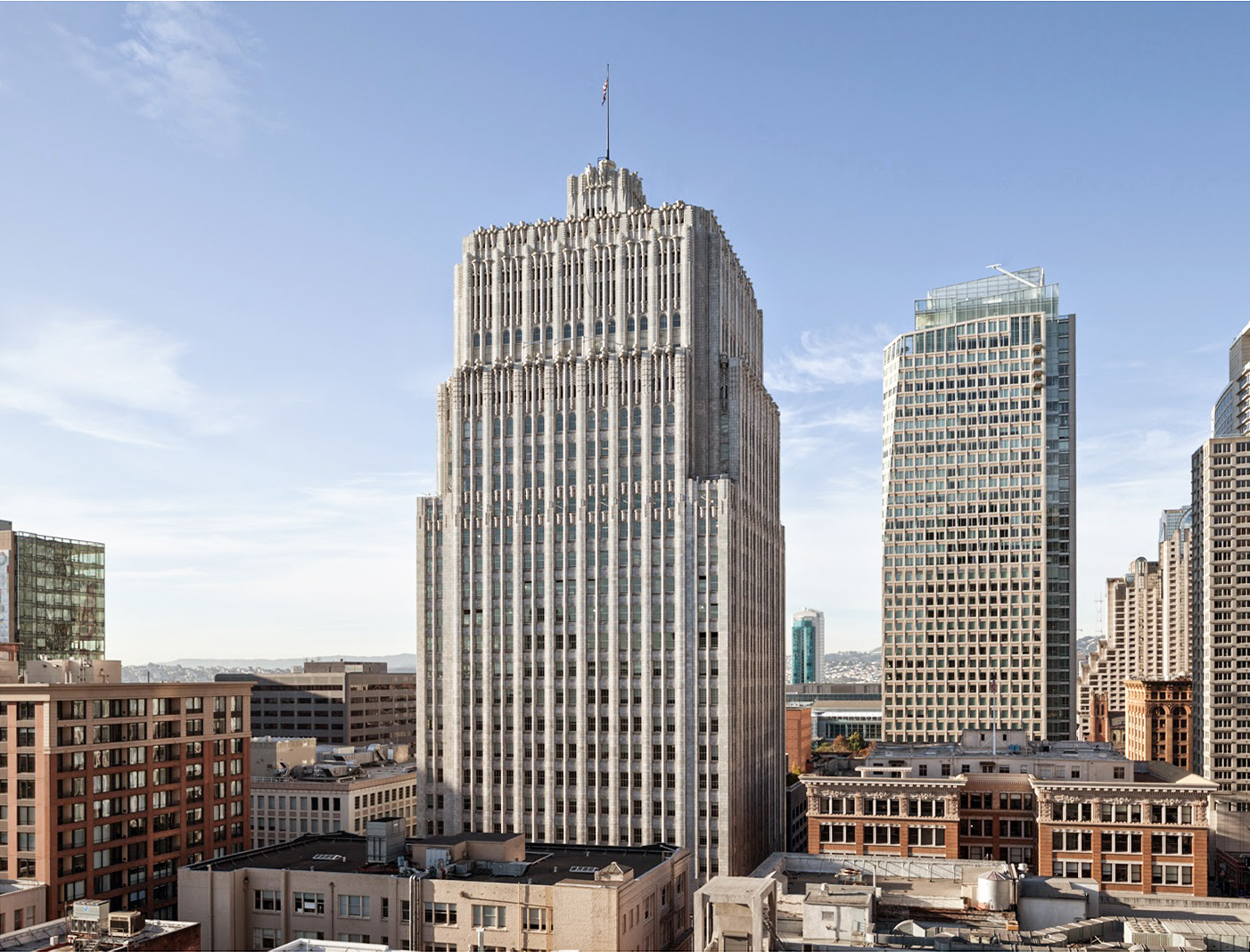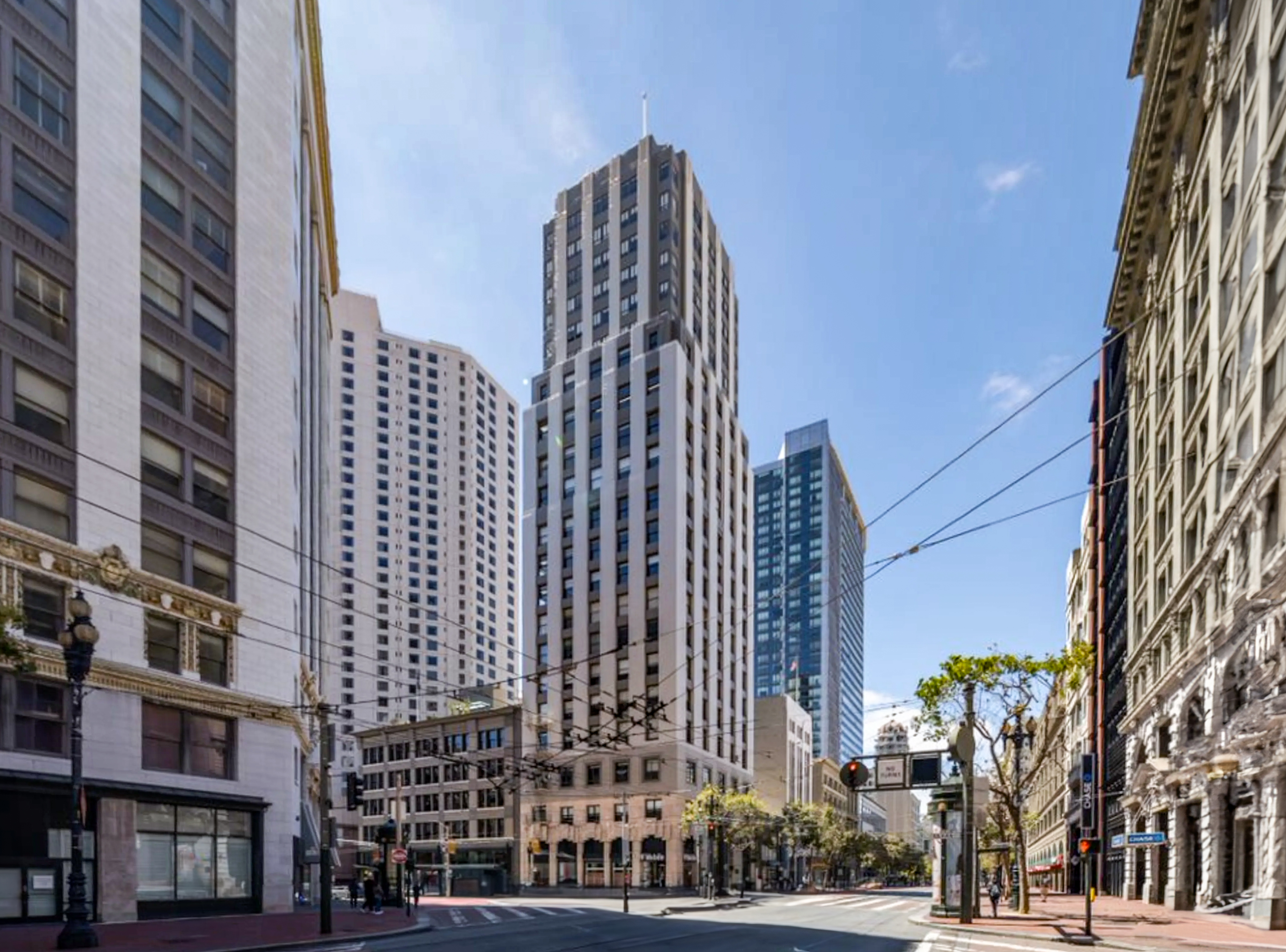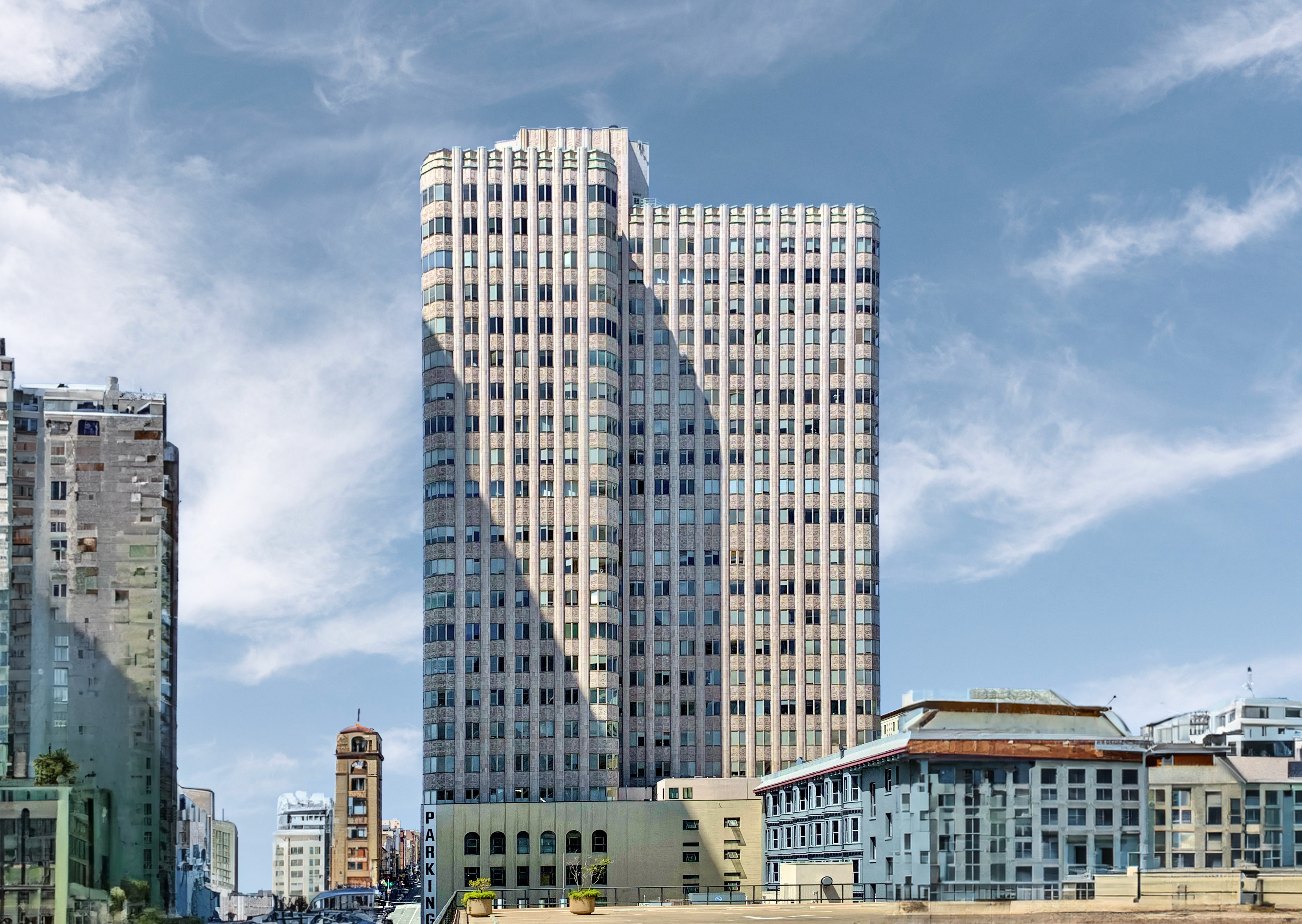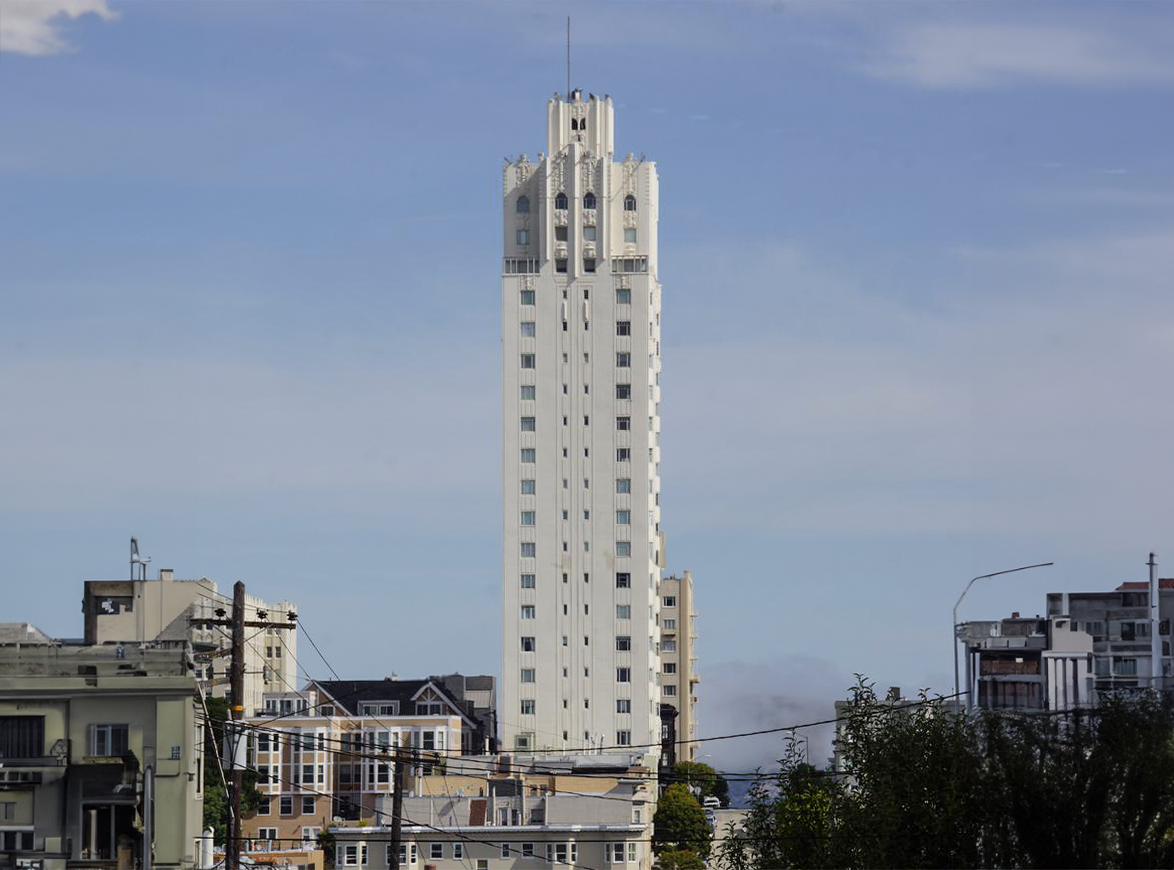The 140 New Montgomery Building is an Art-deco skyscraper designed by Miller and Pflueger, and built between 1924 and 1925 in San Francisco, CA.
140 New Montgomery Building is not the only name you might know this building by though. It is common for companies to want to attach their names to iconic buildings when they move in, or for the general public to come up with nicknames, and this one is no exception. The building has changed names several times over the years, and is also known as:
- The Pacific Telephone & Telegraph Company Building between 1925 and 1984.
- The Pacific Bell Building between 1984 and 2012.
Its precise street address is 140 New Montgomery Street, San Francisco, CA. You can also find it on the map here.
The building underwent a major restoration between 2012 and 2013. The architect commissioned to undertake this restoration was Page & Turnbull Architects.






